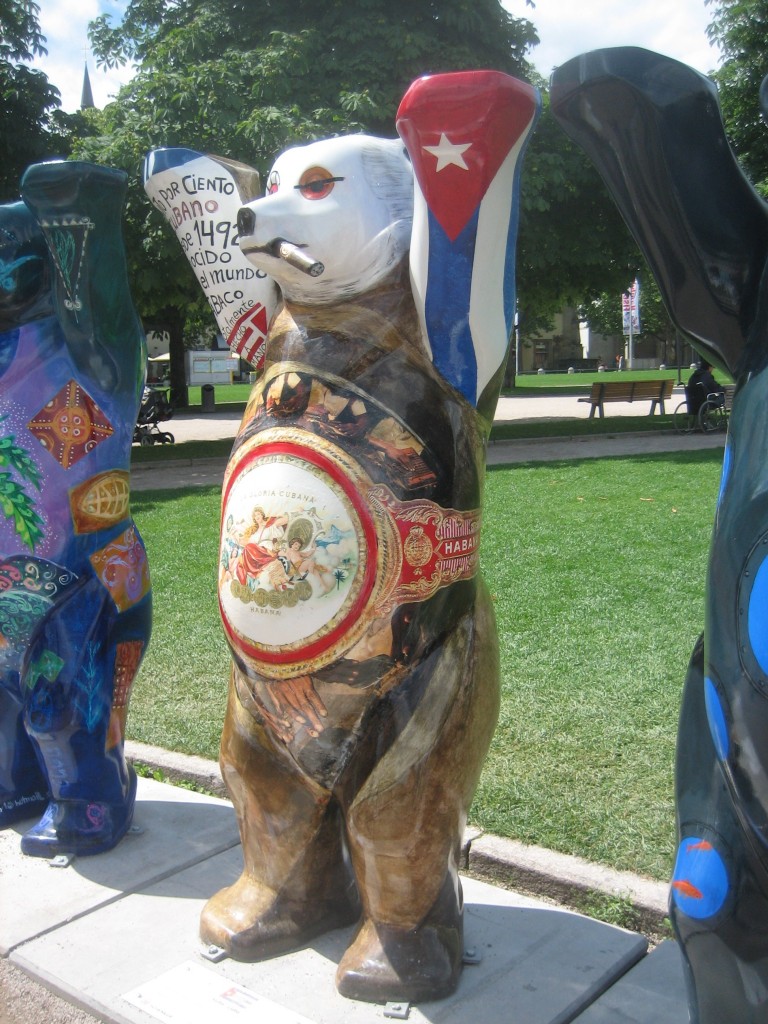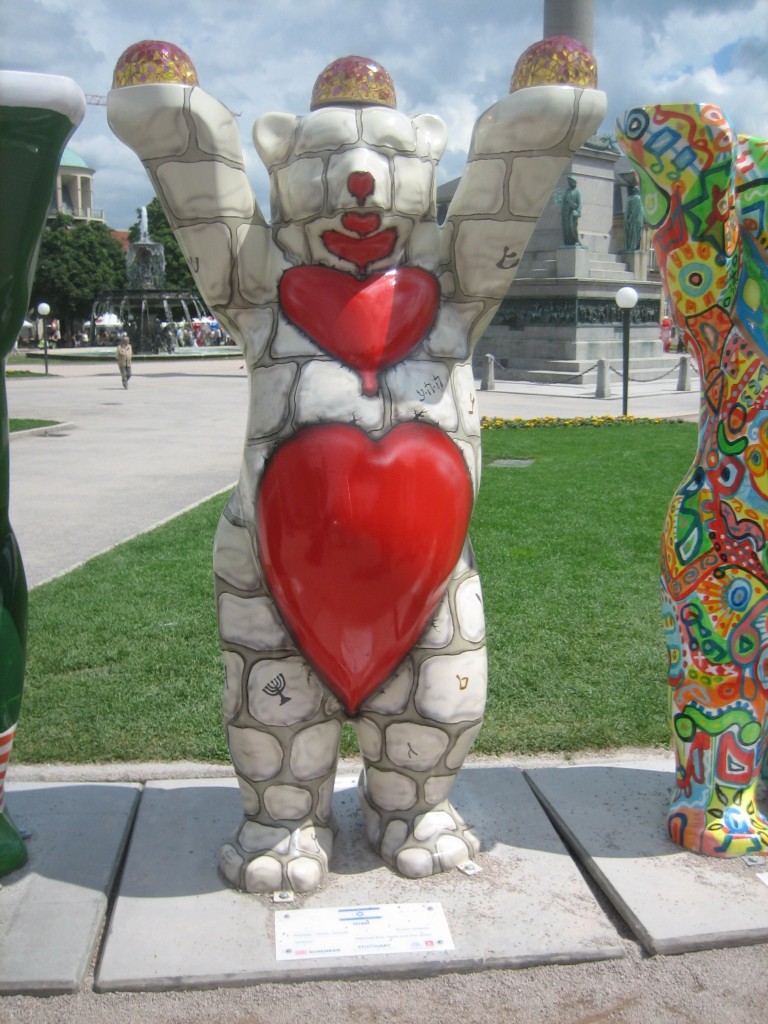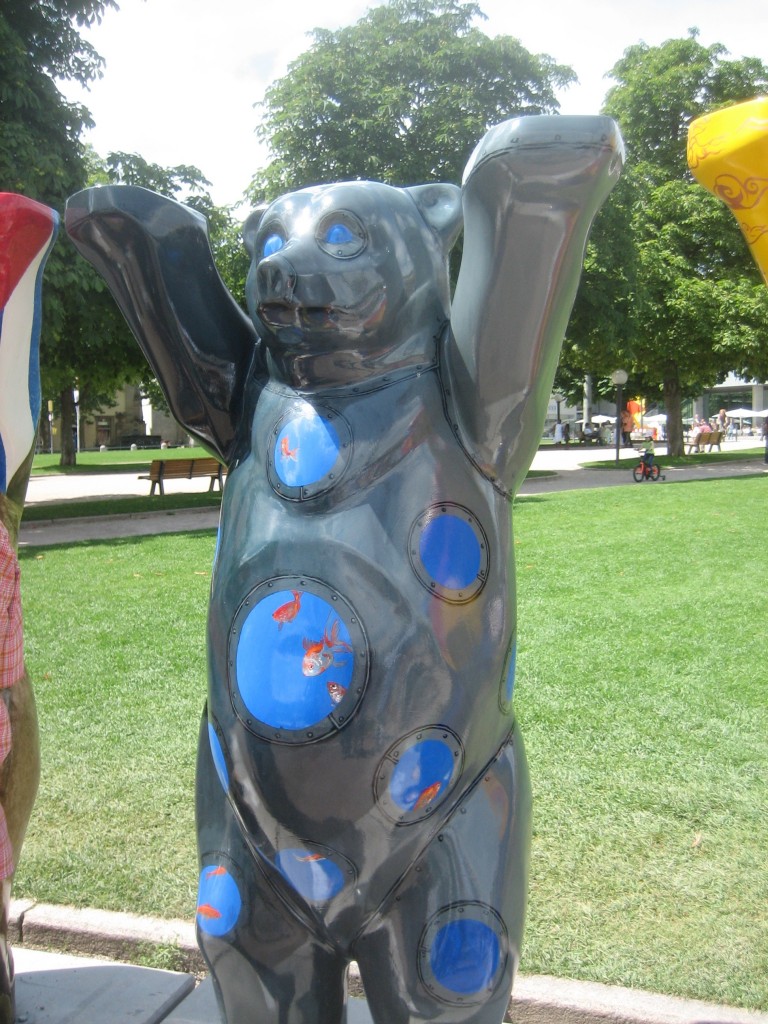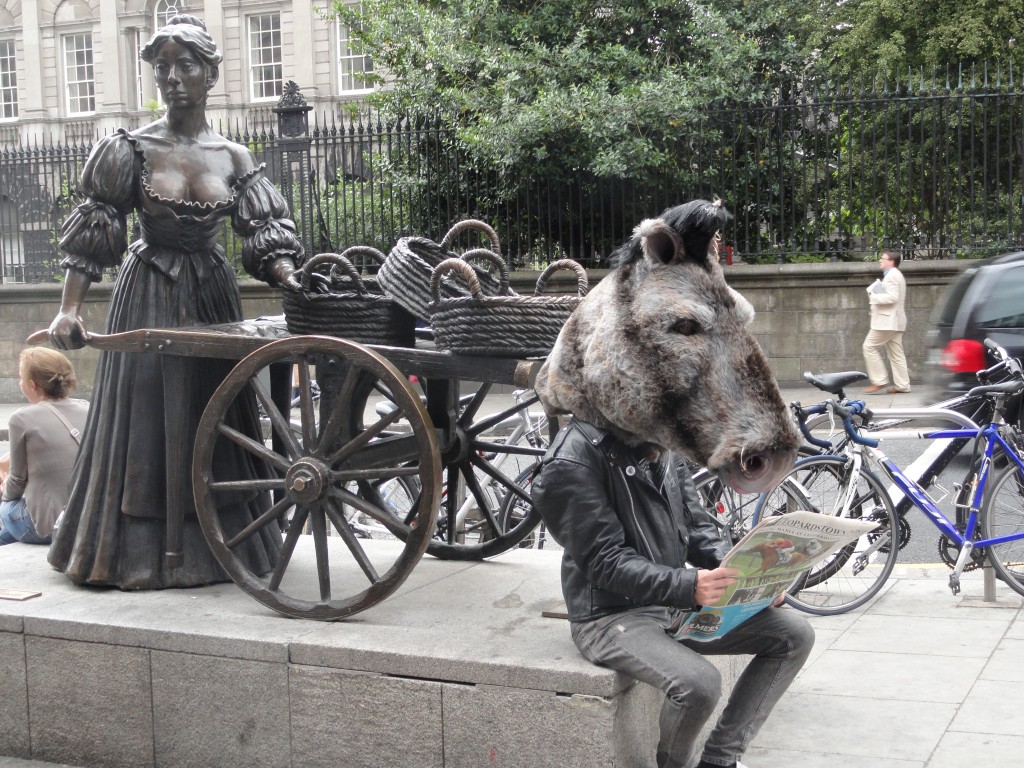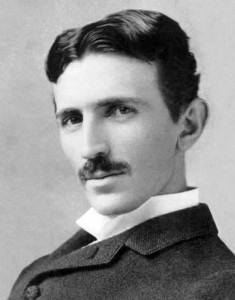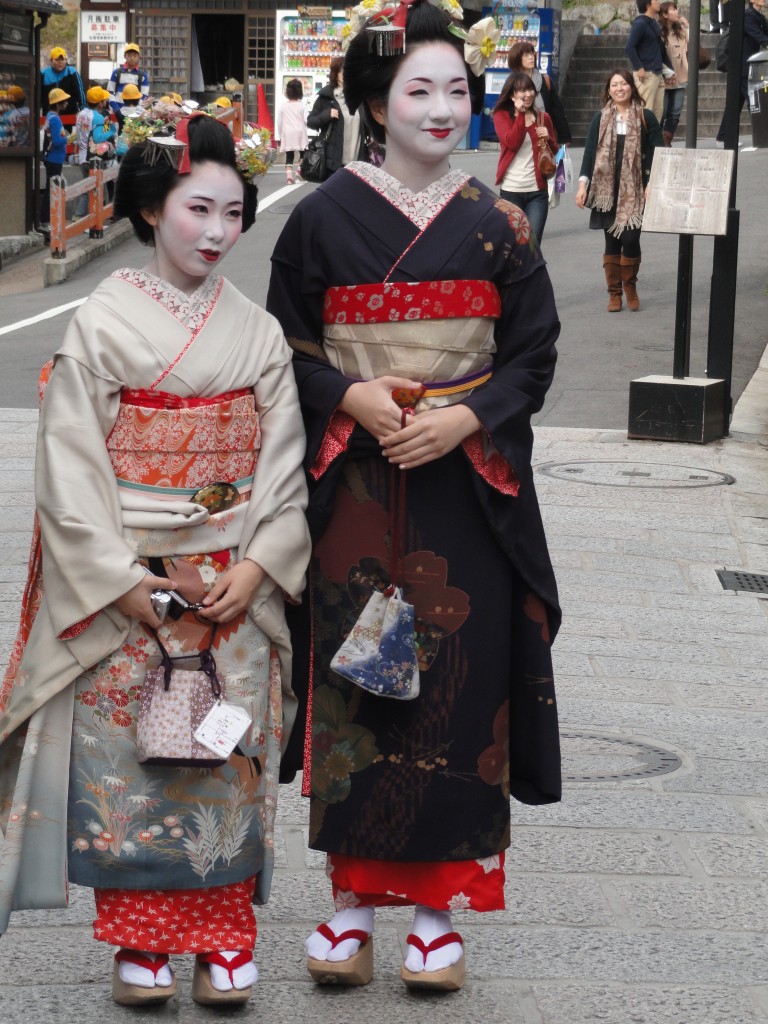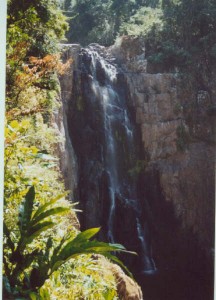With all the stress going on in the world right now it seems like a good time for a change of pace. How about we look at some painted bears? United Buddy Bears, to be exact. A great number of these bears came together a few years ago in Stuttgart, Germany, and I was lucky enough to come across them. I gave you a glimpse of one of them a few days ago in “There’s a story to every picture.”
The “United Buddy Bears” are focused on the idea of “The Art of Tolerance.” For a limited time only the city of Stuttgart put on display bears from around the world. Each participating country was given a blank bear to paint any way they wanted. Then about 150 of them were placed around the fountain near the old palace (in the Schlossplatz). Each country tried to capture the essence – or sometimes the mystery – of their nation in how they painted the bears.
Let’s start off with an easy one.

Okay, the “Statue of Liberty bear” from the United States was pretty easy to guess. But how about this one:
Too easy? How about another easy one:
Okay, waaaay too easy, right? Let’s try one that might take a little more thinking. Look closely at the markings and the bit of a metaphor thrown in as a subtle point.
Now, how about a little scuba diving? This one may not be so easy to figure out, especially for North Americans.
One more because I found this one totally fascinating:
That’s enough for now. Feel free to guess which country each one represents in the comments.** (See below for answers. No cheating.)
David J. Kent is an avid traveler and the author of Lincoln: The Man Who Saved America, now available. His previous books include Tesla: The Wizard of Electricity and Edison: The Inventor of the Modern World (both Fall River Press). He has also written two e-books: Nikola Tesla: Renewable Energy Ahead of Its Time and Abraham Lincoln and Nikola Tesla: Connected by Fate.
Check out my Goodreads author page. While you’re at it, “Like” my Facebook author page for more updates!
Follow me by subscribing by email on the home page. Share with your friends using the buttons below.
**Answers
1. United States
2. Cuba
3. China
4. Croatia
5. Panama
6. El Salvador



